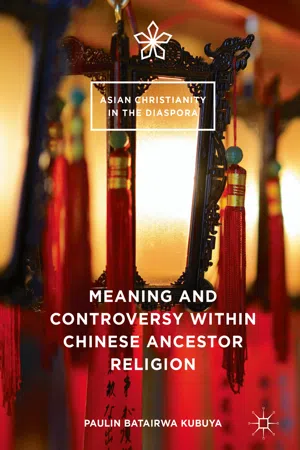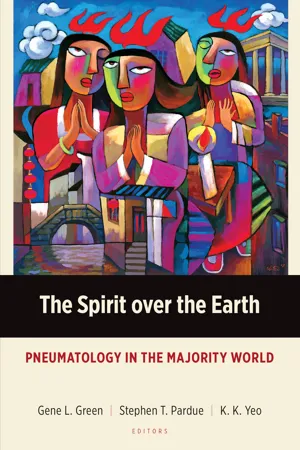History
Rites Controversy
The Rites Controversy was a dispute between Jesuit missionaries and the Chinese emperor over whether Chinese converts to Christianity should be allowed to continue practicing Confucian ancestor worship. The controversy lasted from the late 16th century to the mid-18th century and had significant political and religious implications for both China and Europe.
Written by Perlego with AI-assistance
Related key terms
Related key terms
1 of 4
Related key terms
1 of 3
2 Key excerpts on "Rites Controversy"
- Paulin Batairwa Kubuya(Author)
- 2018(Publication Date)
- Palgrave Macmillan(Publisher)
The Chinese Rites Controversy had subsided by the time Protestant missionaries entered China and established themselves there. Protestants were not bound by an oath such as the one imposed by Benedict XIV’s Ex quo singulari, nor were they required to observe missionary regulations such as those developed by the Catholic missionaries. However, these missionaries soon recognized that ancestor rites were a cultural component that needed to be grasped and addressed. The topic appeared regularly on the agenda of synod-like gatherings among Protestant missionaries in China between 1877 and 1925. If Protestantism had had a hierarchical structure like the Catholic Church, their diverse assessments of the rites would have led them to what James Thayer Addison spoke of as the “Protestant Controversy over ancestor- worship.” 156 The records of those meetings reveal how the rites were perceived in the context of yet another case of Christian encounter with Chinese culture. The discussions revolved around two attitudes that had been archetypes since the post-Ricci period. On one side were the supporters of a method and attitude of accommodation. Opposed to them were those who, in the name of orthodoxy, condemned the rites as Chinese superstition s and insisted on the necessity of conversion and abandoning idolatrous praxes. What were the prevalent attitudes among Protestant missionaries regarding practices related to ancestor worship ? This question can be addressed in part by consulting the records of several general conferences and discussions held by Protestant missionaries in China between the 1870s and 1925. 157 In a review article addressing the Protestant attitude to ancestor worship, James T. Addison notes that until 1877 there were only occasional references to the topic in Protestant books, articles and reports- eBook - ePub
The Spirit over the Earth
Pneumatology in the Majority World
- Gene L. Green, Stephen T. Pardue, K. K. Yeo(Authors)
- 2016(Publication Date)
- Langham Global Library(Publisher)
As “an apostle to the Gentiles” (Rom. 11:13), Paul launched three missionary journeys, primarily to establish churches in Mediterranean cities. Through his letter writing, he showed Jews and Gentiles the path to Christian faith based on the cross of Christ and the work of the Holy Spirit. With the help of a culturally sensitive and transformative missionary strategy and by means of countercultural accommodation, Gentile Christians soon became the majority of the church in the first-century Jesus movement. Christianity spread rapidly in the Roman Empire soon after and eventually “conquered” the empire as it became its state religion.By comparison, in the third mission of Christianity to China, the Jesuit Matteo Ricci (1552–1610) advocated a missionary strategy of adaptation, which was well received by the Ming and Qing governments and Chinese intellectuals. He was attacked later by missionaries from other Catholic orders. In this so-called Chinese Rites Controversy, the Holy See banned Chinese Christians from practicing commemorating rites of ancestors and Confucius. Consequently, the Chinese emperor Kangxi (1654–1722) canceled the proclamation right of Christianity in China. This vigorous conflict led to a fatal failure of the Chinese mission over the next several hundred years.It is widely believed that the Holy See should assume primary responsibility for this failure. However, significant questions remain: Why did the Holy See’s judgment of the Chinese rites lead to a dead end? What mistakes did the Holy See make in its missionary strategy with regards to the dynamic of culture and the Spirit? Numerous studies have focused on the historical facts of the controversy, but this chapter deliberates on the theological causes behind it.This chapter first presents a brief survey of Chinese pneumatology within biblical studies. It then traces the historical development of the Chinese Rites Controversy, detailing the two opposite views on this issue. Drawing insights from Pauline pneumatology, especially regarding the relationship between the Holy Spirit and Chinese custom and law, the chapter then argues that it is only the Holy Spirit who can initiate and maintain one’s identity as a Christian, and that the Holy Spirit must be an agent of transformation in a culture receiving the gospel. In other words, the commemorating rites of ancestors and Confucius are Chinese customs that should be acknowledged and absorbed into the Christian faith through the fulfilling and transforming work of the Holy Spirit. We know that, historically, the Rites Controversy finally ended with the Roman Catholic Holy See’s concession, and perhaps that in itself indicates a hindsight acknowledgment regarding the necessity and possibility of a Chinese Christianity.
Index pages curate the most relevant extracts from our library of academic textbooks. They’ve been created using an in-house natural language model (NLM), each adding context and meaning to key research topics.
Explore more topic indexes
Explore more topic indexes
1 of 6
Explore more topic indexes
1 of 4

